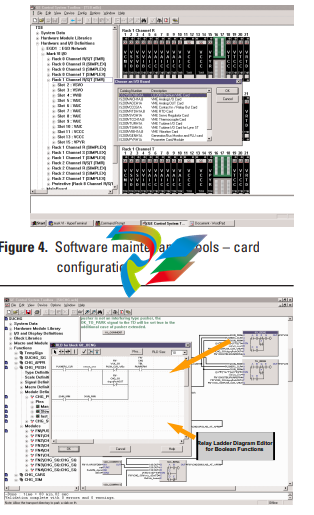
GESPEEDTRONIC™ Mark VI Turbine Control System

ple nodes based on the UDP/IP standard
(RFC 768). Data can be transmitted Unicast,
Multicast or Broadcast to peer control systems.
Data (4K) can be shared with up to 10 nodes at
25Hz (40ms). A variety of other proprietary
protocols are used with EGD to optimize communication performance on the UDH.
40 ms is fast enough to close control loops on
the UDH; however, control loops are normally
closed within each unit control. Variations of
this exist, such as transmitting setpoints
between turbine controls and generator controls for voltage matching and var/power-factor
c
control. All trips between units are hardwired
even if the UDH is redundant.
The UDH communication driver is located on
the Main Processor Card in the Mark VI. This is
the same card that executes the turbine application software; therefore, there are no potential communication failure points between the
main turbine processor and other controls or
monitoring systems on the UDH. In TMR systems, there are three separate processor cards
executing identical application software from
identical databases. Two of the UDH drivers are
normally connected to one switch, and the
other UDH driver is connected to the other
switch in a star configuration. Network topologies conform to Ethernet IEEE 802.3 standards.
The GE networks are a Class “C” Private
Internet according to RFC 1918: Address
Allocation for Private Internets – February
1996. Internet Assigned Numbers Authority
(IANA) has reserved the following IP address
space 192.168.1.1: 192.168.255.255 (192.168/
16 prefix).
Communication links from the Mark VI to
remote computers can be implemented from
either an optional RS232 Modbus port on the
main processor card in Simplex systems, or
from a variety of communication drivers from
the HMI. When the HMI is used for the communication interface, an Ethernet card in the
HMI provides an interface to the UDH, and a
second Ethernet card provides an interface to
the remote computer.
All operator commands that can be issued from
an HMI can be issued from a remote computer
through the HMI(s) to the Mark VI(s), and the
remote computer can monitor any application
software data in the Mark VI(s). Approximately
500 data points per control are of interest to a
plant control system; however, about 1,200




























































































































